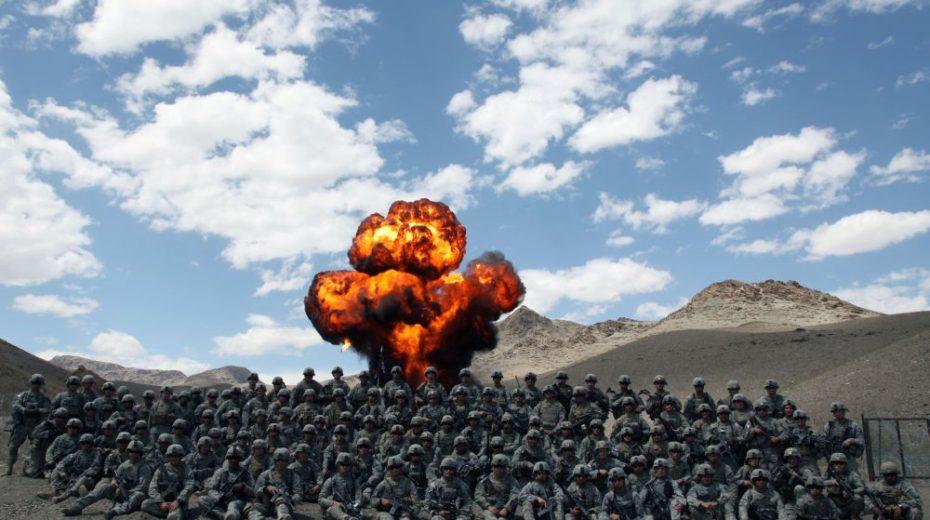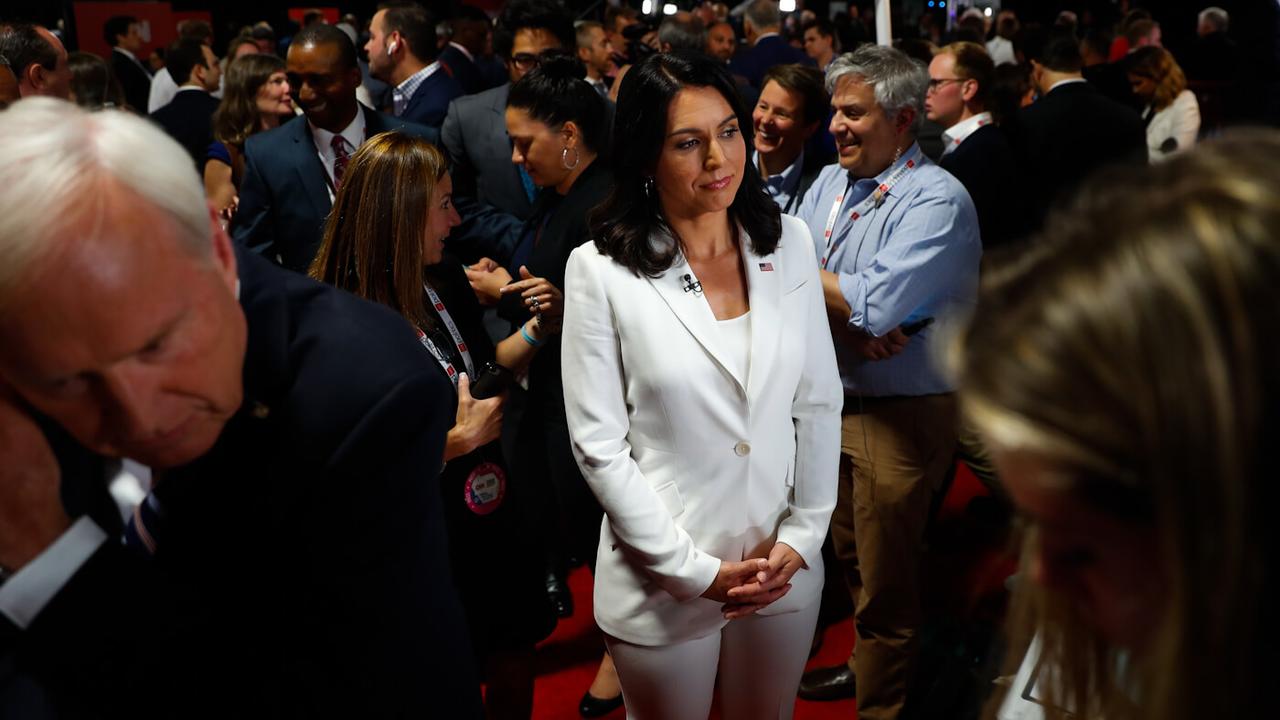Authored by Guy Milliere via The Gatestone Institute,
Paris, Champs-Élysées. July 14. Bastille Day. Just before the military parade begins, President Emmanuel Macron comes down the avenue in an official car to greet the crowd. Thousands of people gathered along the avenue shout “Macron resign”, boo and hurl insults.
At the end of the parade, a few dozen people release yellow balloons into the sky and distribute leaflets saying “The yellow vests are not dead.” The police disperse them, quickly and firmly. Moments later, hundreds of “Antifa” anarchists arrive, throw security barriers on the roadway to erect barricades, start fires and smash the storefronts of several shops. The police have a rough time mastering the situation, but early in the evening, after a few hours, they restore the calm.
A few hours later, thousands of young Arabs from the suburbs gather near the Arc de Triomphe. They have apparently come to “celebrate” in their own way the victory of an Algerian soccer team. More storefronts are smashed, more shops looted. Algerian flags are everywhere. Slogans are belted out: “Long live Algeria”, “France is ours”, “Death to France”. Signs bearing street names are replaced by signs bearing the name of Abd El Kader, the religious and military leader who fought against the French army at the time of the colonization of Algeria. The police limit themselves to stemming the violence in the hope that it will not spread.
Around midnight, three leaders of the “yellow vest” movement come out of a police station and tell a TV reporter that they were arrested early that morning and imprisoned for the rest of the day. Their lawyer states that they did nothing wrong and were just “preventively” arrested. He emphasizes that a law passed in February 2019 allows the French police to arrest any person suspected of going to a demonstration; no authorization from a judge is necessary and no appeal possible.
On Friday, July 19, the Algerian soccer team wins again. More young Arabs gathernear Arc de Triomphe to “celebrate” again. The damage is even greater than eight days before. More police show up; they do almost nothing.
On July 12, two days before Bastille Day, several hundred self-declared African illegal migrants enter the Pantheon, the monument that houses the graves of heroes who played major roles in the history of France. There, the migrants announce the birth of the “Black Vest movement”. They demand the “regularization” of all illegal immigrants on French territory and free housing for each of them. The police show up but decline to intervene. Most of the demonstrators leave peacefully. A few who insult the police are arrested.
France today is a country adrift. Unrest and lawlessness continue to gain ground. Disorder has become part of daily life. Polls show that a large majority rejectPresident Macron. They seem to hate his arrogance and be inclined not to forgive him. They seem to resent his contempt for the poor; the way he crushed the “yellow vest” movement, and for his not having paid even the slightest attention to the protesters’ smallest demands, such as the right to hold a citizens’ referendumlike those in Switzerland. Macron can no longer go anywhere in public without risking displays of anger.
The “yellow vests” seem finally to have stopped demonstrating and given up: too many were maimed or hurt. Their discontent, however, is still there. It seems waiting to explode again.
The French police appear ferocious when dealing with peaceful protesters, but barely able to prevent groups such as “Antifa” from causing violence. Therefore, now at the end of each demonstration, “Antifa” show up. The French police seem particularly cautious when having to deal with young Arabs and illegal migrants. The police have been given orders. They know that young Arabs and illegal migrants could create large-scale riots. Three months ago, in Grenoble, the police were pursuing some young Arabs on a stolen motorcycle, who were accused of theft. While fleeing, they had an accident. Five days of mayhem began.
President Macron looks like an authoritarian leader when he faces the disgruntled poor. He never says he is sorry for those who have lost an eye or a hand or suffered irreversible brain damage from extreme police brutality. Instead, he asked the French parliament to pass a law that almost completely abolishes the right to protest, the presumption of innocence and that allows the arrest of anyone, anywhere, even without cause. The law was passed.
In June, the French parliament passed another law, severely punishing anyone who says or writes something that might contain “hate speech”. The law is so vague that an American legal scholar, Jonathan Turley, felt compelled to react. “France has now become one of the biggest international threats to freedom of speech”, he wrote.
Macron does not appear authoritarian, however, with violent anarchists. When facing young Arabs and illegal migrants, he looks positively weak.
He knows what the former interior minister, Gérard Collomb, said in November 2018, while resigning from government:
“Communities in France are engaging in conflict with one another more and more and it is becoming very violent… today we live side by side, I fear that tomorrow it will be face to face”.
Macron also knows what former President François Hollande said after serving his term as president: “France is on the verge of partition”.
Macron knows that the partition of France already exists. Most Arabs and Africans live in no-go zones, apart from the rest of the population, where they accept the presence of non-Arabs and non-Africans less and less. They do not definethemselves as French, except when they say that France will belong to them. Reports show that most seem filled with a deep rejection of France and Western civilization. An increasing number seem to place their religion above their citizenship; many seem radicalized and ready to fight.
Macron seems not to want to fight. Instead, he has chosen to appease them. He is single-mindedly pursuing his plans to institutionalize Islam in France. Three months ago, the Muslim Association for Islam of France (AMIF) was created. One branch will handle the cultural expansion of Islam and take charge of “the fight against anti-Muslim racism”. Another branch will be responsible for programs that train imams and build mosques. This autumn, a “Council of Imams of France” will be established. The main leaders of the AMIF are (or were until recently) membersof the Muslim Brotherhood, a movement designated as a terrorist organization in Egypt, Bahrain, Syria, Russia, Saudi Arabia and the United Arab Emirates — but not in France.
Macron is aware of the demographic data. They show that the Muslim population in France will grow significantly in the coming years. (The economist Charles Gave wrote recently that by 2057, France will have a Muslim majority). Macron can see that it will soon be impossible for anyone to be elected President without relying on the Muslim vote, so he acts accordingly.
Macron apparently sees that the discontent that gave birth to the “yellow vest” movement still is there. He appears to think that repression will be enough to prevent any further uprising, and so does nothing to remedy the causes of the discontent.
The “yellow vest” movement was born of a revolt against exorbitantly high taxes on fuel, and harsh government measures against cars and motorists. These measures included reduced speed limits — 50 mph on most highways — and more speed-detection cameras; a sharp rise in the penalties on tickets, as well as complex and expensive annual motor vehicle controls. French taxes on fuels recently rose again and are now the highest in Europe (70% of the price paid at the pump). Other measures against the use of automobiles and motorists still in force are especially painful for the poor. They were already chased from the suburbs by intolerant newcomers, and now have to live — and drive — even farther from where they work.
Macron has made no decision to remedy the disastrous economic situation in France. When he was elected, taxes, duties and social charges represented almost 50% of GDP. Government spending represented 57% of GDP (the highest among developed countries). The ratio of national debt to GDP was almost 100%.
Taxes, duties, social charges and government spending remain at the same level now as when Macron came in. The debt-to-GDP ratio is 100% and growing. The French economy is not creating jobs. Poverty remains extremely high: 14% of the population earn less than 855 euros ($950) a month.
Macron pays no attention to the growing cultural disaster also seizing the country. The educational system is crumbling. An increasing percentage of students graduate from high school without knowing how to write a sentence free of errors that make incomprehensible anything they write. Christianity is disappearing. Most non-Muslim French no longer define themselves as Christians. The fire that ravaged the Cathedral of Notre Dame de Paris was officially an “accident,” but it was only one of the many Christian religious buildings in the country that were recently destroyed. Every week, churches are vandalized — to the general indifference of the public. In just the first half of 2019, 22 churches burned down.
The main concern of Macron and the French government seems not to be the risk of riots, the public’s discontent, the disappearance of Christianity, the disastrous economic situation, or Islamization and its consequences. Instead, it is climate change. Although the amount of France’s carbon dioxide emissions is infinitesimal(less than 1% of the global total), combatting “human-induced climate change” appears Macron’s absolute priority.
A Swedish girl, Greta Thunberg, age 16, — nevertheless the guru of the “fight for the climate” in Europe — was recently invited to the French National Assembly by members of parliament who support Macron. She delivered a speech, promising that the “irreversible destruction” of the planet will begin very soon. She addedthat political leaders “are not mature enough” and need lessons from children. MPs who support Macron applauded warmly. She received a Prize of Freedom, just created, which will be given each year to people “fighting for the values of those who landed in Normandy in 1944 to liberate Europe”. It is probably reasonable to assume that not one of those who landed in Normandy in 1944 thought he was fighting to save the climate. Such minor details, however, seem beyond Macron and the parliamentarians who support him.
Macron and the French government also seem unconcerned that Jews — driven by the rise of anti-Semitism, and understandably worried about court decisions infused with the spirit of submission to violent Islam — continue to flee from France.
Kobili Traore, the man who murdered Sarah Halimi in 2017 while chanting surasfrom the Qur’an and shouting that the Jews are Sheitan (Arabic for “Satan”) was found not guilty. Traore had apparently smoked cannabis before the murder, so the judges decided that he was not responsible for his acts. Traore will soon be released from prison; what happens if he smokes cannabis again?
A few weeks after the murder of Halimi, three members of a Jewish family were assaulted, tortured and held hostage in their home by a group of five men who said that “Jews have money” and “Jews must pay”. The men were arrested; all were Muslim. The judge who indicted them announced that their actions were “not anti-Semitic”.
On July 25, 2019 when the Israeli soccer team Maccabi Haifa was competing in Strasbourg, the French government limited the number of Israeli supporters in the stadium to 600, not one more. A thousand had bought plane tickets to come to France to attend the match. The French government also banned the waving of Israeli flags at the game or anywhere in the city. Nonetheless, in the name of “free speech”, the French Department of the Interior permitted anti-Israeli demonstrations in front of the stadium, and Palestinian flags and banners saying “Death to Israel” were there. The day before the match, at a restaurant near the stadium, some Israelis were violently attacked. “The demonstrations against Israel are approved in the name of freedom of expression, but the authorities forbid supporters of Maccabi Haifa to raise the Israeli flag, it is unacceptable,” said Aliza Ben Nun, Israel’s ambassador to France.
The other day, a plane full of French Jews leaving France arrived in Israel. More French Jews will soon go. The departure of Jews to Israel entails sacrifices: some French real estate agents take advantage of the wish of many Jewish families to leave, so they buy and sell properties owned by Jews at a price far lower than their market value.
Macron will remain as president until May 2022. Several leaders of the parties of the center-left (such as the Socialist Party) and center-right (The Republicans) joined The Republic on the Move, the party he created two years ago. After that, the Socialist Party and The Republicans electorally collapsed. Macron’s main opponent in 2022 is likely to be the same as in 2017: Marine Le Pen, the leader of the populist National Rally.
Although Macron is widely unpopular and widely hated, he will probably use the same slogans as in 2017: that he is the last bastion of hope against “chaos” and “fascism.” He has a strong chance of being elected again. Anyone who reads the political program of the National Rally can see that Le Pen is not a fascist. Also, anyone who looks at the situation in France may wonder if France has not already begun to sink into chaos.
The sad situation that reigns in France is not all that different from that in many other European countries. A few weeks ago, an African cardinal, Robert Sarah, published a book, Le soir approche et déjà le jour baisse (“The evening comes, and already the light darkens”). “At the root of the collapse of the West”, he writes, “there is a cultural and identity crisis. The West no longer knows what it is, because it does not know and does not want to know what shaped it, what constituted it, what it was and what it is. (…) This self-asphyxiation leads naturally to a decadence that opens the way to new barbaric civilizations.”
That is exactly what is happening in France — and Europe.
via ZeroHedge News https://ift.tt/2ME3NmO Tyler Durden








